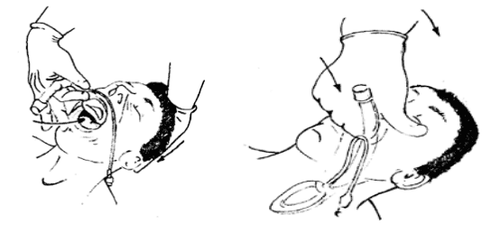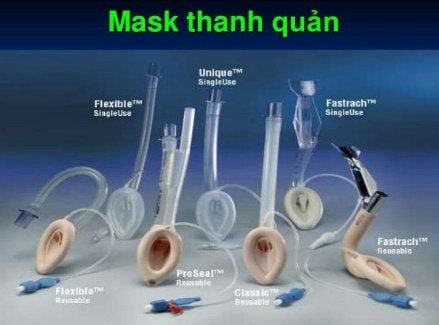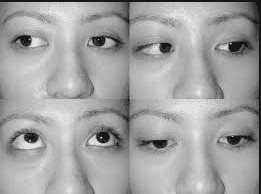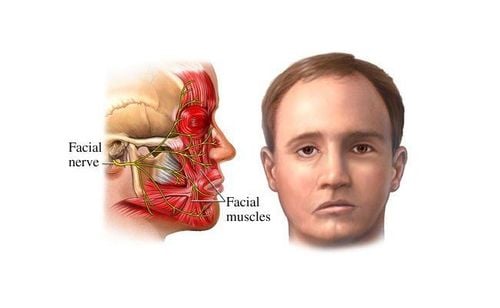This is an automatically translated article.
The article was professionally consulted by Specialist Doctor I Tran Thi Ngat - Department of General Surgery - Vinmec Danang International Hospital. Dr. Ngat has over 15 years of experience as an Anesthesiologist.Ureteral prolapse is a dilatation of a sac-shaped protrusion into the bladder lumen of the wall of the ureter. Laparoscopic surgery for protrusion of the protrusion of the ureteral foramen combined with anesthesia with a laryngeal mask is an effective treatment method.
1. Anesthesia mask larynx laparoscopic surgery to dissect protrusion of ureteral foramen
Ureteral prolapse is a common disease when the ureter falls out of place, narrows the place to pour into the bladder... The prolapsed sac is the bladder lining and the ureter wall are two common types of ureteral prolapse. This pathology can cause complications such as: urinary retention, cystitis, kidney failure, stones in the protrusion sac...Laparoscopic surgery for protrusion of the protrusion of the ureteral opening in combination with anesthesia mask laryngeal mask is technique of general anesthesia with laryngeal mask placed for the purpose of breathing control during surgery.
Selected patients when intubation is difficult, especially difficult to ventilate or cannot be ventilated; airway and respiratory control in general anesthesia for some surgeries and temporarily in emergency... is indicated under anesthesia with laryngeal mask for endoscopic dissection of the protrusion of the ureteral foramen.
However, not all patients can have laryngeal mask anesthesia for endoscopic dissection of the protrusion of the ureteral foramen. Below are some cases of contraindications to laryngeal mask anesthesia.
Stomach full. Complex maxillofacial injury Insufficient means of anesthesia and resuscitation.

2. Process
2.1. Prepare
On the side of the hospital: To perform laryngeal mask anesthesia for endoscopic surgery, the surgical team needs doctors and nurses specializing in anesthesiology and resuscitation. At the same time, the means and tools need to be fully prepared. Specifically:Anesthesia machine system with breathing, hand-held oxygen source, vital function monitor (ECG, arterial blood pressure, SpO2, EtCO2, breathing rate, temperature) defibrillator, suction machine.. .Laryngeal masks of all sizes, straws, masks, squeeze balls, oropharyngeal canals. Lidocaine 10% spray. Salbutamol spray. Prophylactic means of endotracheal intubation: endotracheal tube and laryngoscope, Lower tract endoscopic urology surgical kit. On the side of the patient:
The patient is examined and explained about the advantages of anesthesia before surgery to detect and prevent possible risks. Evaluation of difficult laryngeal mask placement. For patients who are taking oral anticoagulants, surgery will be carried out 3 days after stopping anticoagulants, doing blood coagulation tests: the prothrombine ratio has increased to the same level as in normal people; It is possible to replace oral anticoagulants with parenteral anticoagulants; Because the effects of parenteral anticoagulants are usually short-lived, surgery can be performed 6 hours after the last anticoagulation injection. Medicines for heart disease, high blood pressure, must be changed or stopped before surgery. Patients at risk of coronary insufficiency, arrhythmia, respiratory failure, must undergo more intensive tests before surgery. If the patient is too excited, the doctor will prescribe a sedative the night before surgery. Prepare medical records according to regulations of the Ministry of Health.
2.2. Conduct
Before performing laryngeal mask anesthesia for endoscopic resection of the ureteric foramen, the patient is instructed to lie on his back, breathe oxygen or breathe CPAP before induction of anesthesia at least 5 minutes until the oxygen concentration in the exhaled air at least 90%. Simultaneously, a monitoring machine was installed, the transmission line was set up and pre-anesthesia was performed.2.2.1. Initiation of anesthesia
During the induction of anesthesia, the patient is prescribed intravenous anesthetics (propofol, etomidat, ketamine...), volatile anesthetics (sevoflurane...), analgesics, muscle relaxants...Doctor Only place the laryngeal mask when the patient sleeps deep enough or has enough muscle relaxation, pain relief if needed.
2.2.2. Technique of placing a laryngeal mask
Here are the steps to put on the laryngeal mask:Step 1: Place the patient's head in an intermediate or slightly supine position. With one hand open the patient's mouth, the other hand put the laryngeal mask through the dental arches to the base of the tongue, press the back of the mask against the hard palate, push the mask to slide along the hard palate to enter the hypopharynx. Note that holding the laryngeal mask like holding a pen, put your index finger at the junction between the laryngeal mask and the tube part
Step 2: Stop when encountering resistance
Step 3: Check the tightness of the laryngeal mask, at the same time , inflate the cuff according to the volume instructed on the laryngeal mask
Step 4: Check the correct position of the laryngeal mask by auscultation and EtCO2 results. Fix with adhesive tape.
2.2.3. Maintain passion
Maintain anesthesia with intravenous or volatile anesthetics, analgesics, muscle relaxants (if necessary). Control breathing by machine or hand squeeze. Monitoring the depth of anesthesia based on heart rate, blood pressure, sweating, lacrimation (PRST); MAC, BIS and Entropy (if any)... Monitor vital signs: heart rate, blood pressure, SpO2, EtCO2, body temperature. Preventing the wrong position, retraction, folding, and obstruction of the laryngeal mask.
2.2.4. Criteria for withdrawing laryngeal mask
The patient is awake, following orders. Head elevation for more than 5 seconds, TOF > 0.9 (if muscle relaxants are used). Spontaneous breathing, respiratory rate within normal limits Pulse, blood pressure stable. Body temperature > 35oC. There were no complications of anesthesia and surgery.3. Accidents and handling
Anesthetized patients with laryngeal mask laparoscopic surgery for protrusion of the ureteral foramen may encounter some unwanted complications such as:Bleeding: This complication rarely occurs. In case of bleeding, can be managed carefully to stop bleeding Septic shock: common in patients with cystitis, inflammation of the urinary system and can be life-threatening. When a patient shows signs of septic shock, it should be treated quickly. Coordinate well with the anesthesiologist to resuscitate, urgently burn to stop bleeding; Using strong antibiotics, high-dose combination intravenously, both to ensure good respiration and hemodynamics; Blood culture, urine culture, antibiotic chart. The cause of septic shock is that bladder irrigation pushes bacteria into the circulatory system, causing sepsis. Bladder perforation Reflux of gastric juice into airway may require rapid intubation and aspiration of airway fluid Coagulation disturbances causing hypotension or hypertension, cardiac arrhythmias (bradycardia, tachycardia, dysrhythmias). rhythm) Some complications due to laryngeal mask placement such as: Failure to put on laryngeal mask; spasms of the vocal cords - gas - bronchi; trauma when wearing mask,... Some complications after removing laryngeal mask: Respiratory failure; Sore throat, hoarseness ... Vinmec International General Hospital is one of the hospitals that strictly applies safe surgical anesthesia practice standards according to international guidelines. Vinmec has a team of experienced anesthesiologists and nurses, modern equipment such as: nerve detectors, ultrasound machines, Karl Storz's difficult airway control system, comprehensive anesthesia monitoring system GE's AoA (Adequate of Anesthesia) including monitoring of anesthesia, pain and muscle relaxation will provide high quality and safety, helping patients to have adequate anesthesia, not wake up, and do not have residual muscle relaxants after surgery.
Vinmec Health System is also proud to be the first hospital in Vietnam to sign with the World Anesthesiology Association (WFSA) towards the goal of becoming the safest hospital for surgical anesthesia in Southeast Asia.
Please dial HOTLINE for more information or register for an appointment HERE. Download MyVinmec app to make appointments faster and to manage your bookings easily.














